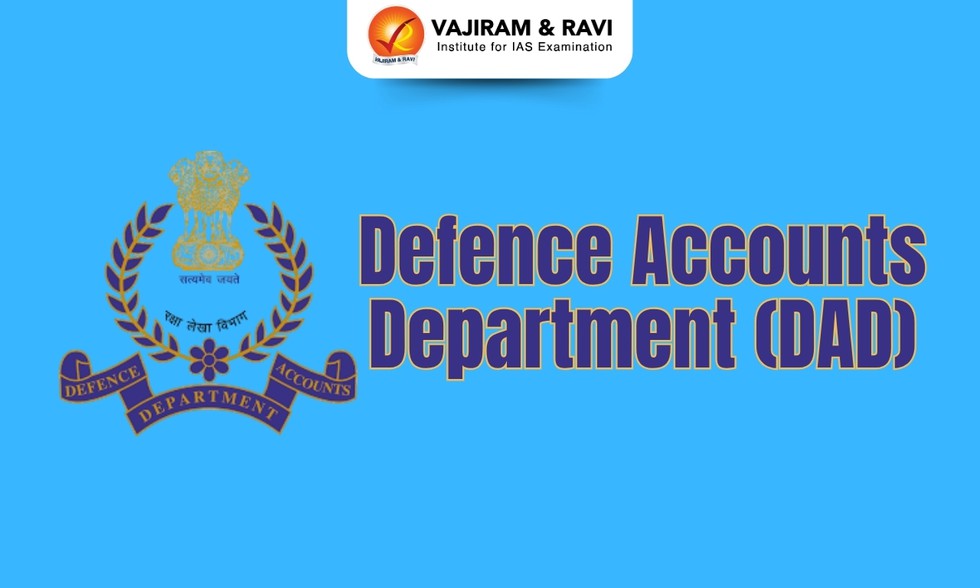About Defence Accounts Department (DAD):
- It functions under the administrative control of the Ministry of Defence.
- It is headed by the Controller General of Defence Accounts (CGDA).
- The mandate given to the department is broadly audit, financial advice, payment, and accounting of all charges pertaining to the Armed Forces.
- It includes bills for supplies and services rendered and for construction and repair work, pay and allowances, pension of defence personnel and civilians, and audit of cash and store accounts of all organizations under the Ministry of Defence.
- The DAD has a vast geographical spread with a network of 1110 offices to cater to the needs of all elements of the Indian Defence Services i.e., Army, Air Force, and Navy, as also all other organizations under Ministry of Defence viz Defence Ordnance Factories (41), DRDO Laboratories/Projects (50), Coast Guard , DGQA , DGBR, DGNCC, DG Defence Estates, Canteen Stores Department (CSD), etc.
- As the principal accounting officer for the Ministry of Defence, the CGDA furnishes necessary information for the Appropriation Accounts to the Ministry of Defence.
- CGDA also prepares the Annual Consolidated Accounts of Defence Services Receipts & Charges and acts as the Principal Accounts Officer for Civil Estimates of the Ministry of Defence.
- DAD is also responsible for rendering the annual accounts for the Ordnance Factory Board (OFB), Military Farms, Canteen Stores Department, and Works Expenditure.
- In addition, the Annual Audit Certificate for the Defence Services, rendered by the CGDA to the Comptroller and Auditor General of India (C&AG) through the Ministry of Defence, is tabled in the Parliament.
- Of late, Audit of offset claims has also been entrusted to the Department.
- History of DAD:
- It is one of the oldest departments under the Government of India.
- Its origin can be traced to the Military Pay Masters under the East India Company.
- In January 1750, the first Pay Master was appointed for paying the garrison at Fort Williams, Calcutta.
- Payments to the troops in the field were made by a Commissary.
- In 1776 a Commissary General was appointed for regulating the accounts.
- In 1788, the designation of the Commissary General was changed to Military Auditor General, who exercised his control over all military disbursements.
- When the British Crown started administering India in 1858, there were Military Accountants General in the Presidencies of Bengal, Madras, and Bombay.
- The office of the Accountant General, Military Department, was created in April 1864.
- In 1865, the Government recognized this position as the Head of the Military Accounts Department.
- In 1922, the office of Military Accountant General (MAG) was reorganised. The Office of MAG then comprised 8 sections viz. Record, AN, Audit, Accounts, Estimate, Pay, Foreign Claims, and Inspection.
- The department was re-named the Defence Accounts Department (DAD) on October 1st, 1951, and the departmental head designated as Controller General of Defence Accounts (CGDA).
- For more than three decades after independence, the DAD functioned under the administrative control of the Ministry of Finance.
- With the introduction of the Integrated Financial Advisor scheme in the Ministry of Defence from August 1983, the department came under the administrative control of the Ministry of Defence.
